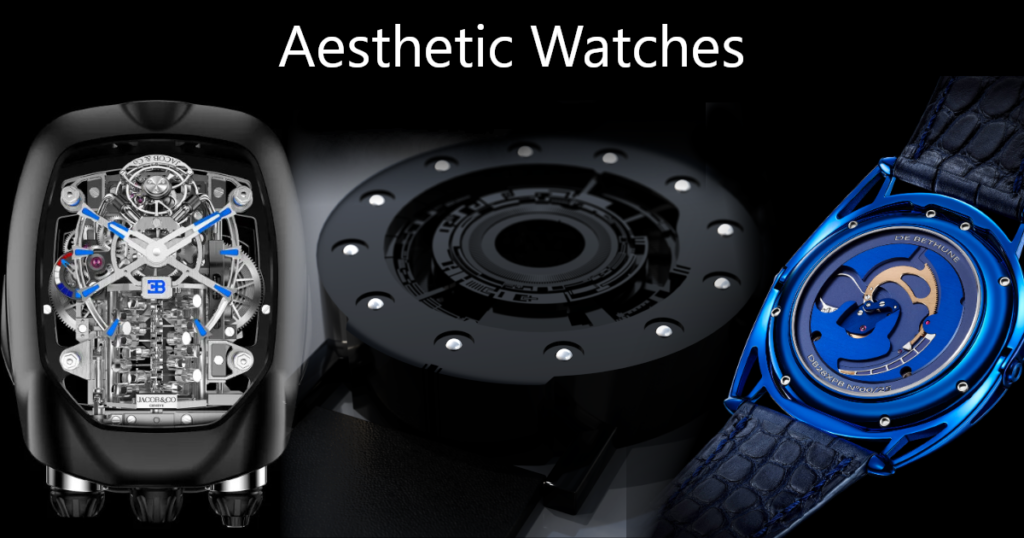
Above, centre: Techno-circle #1 watch.
Sections Of This Article
- What Is Aesthetics?
- The Evolution Of Aesthetics
- Aesthetic Influences On Watchmaking
- Differing Degrees Of Aesthetics Focus In Watch Design
- How Aesthetics Focused Are UnconstrainedTime Watches?
Introduction
In this article I look into the factors behind aesthetic watches . . . starting with the meaning of aesthetics, then looking at how aesthetics developed and evolved through history to recent times.
I then delve into some of the more significant aesthetic influences on watch making, and look at the differing degrees of aesthetics focus in various watches, including our own.
What Is Aesthetics?
This is one of the many concepts where most people have some idea of the meaning, but it’s challenging to define precisely.
Aesthetics, a term derived from the Greek word “aisthesis,” meaning perception or sensation, encompasses the study and appreciation of beauty and art.

Basically it is the difference between beauty and ugliness, and relates to the philosophy of art. And aesthetic also refers to the specific style or essence of something or someone, whether appreciated by others or not.
Aesthetics is a subjective and culturally influenced concept, reflecting the diverse ways individuals and societies interpret and value artistic expression.
Aesthetics often intersects with philosophy, probing questions about the nature of beauty, its role in human experience, and how it shapes our perceptions of the world. As a dynamic field, aesthetics evolves over time, reflecting shifting cultural norms and artistic trends. In essence, it is a multidimensional exploration of the harmonies and resonances that elevate the human experience through the appreciation of the beautiful and the sublime.
There was an interesting experiment which averaged human faces by overlaying multiple photographs and found that the result was consistently considered beautiful. A quality of “balance” can have a positive aesthetic, but not too perfectly balanced, for example, in photography and art, the “rule of thirds” shows that what is most aesthetically pleasing is having the focus of an image a third of the way along it, rather than in the centre, leaving the other two thirds of the image more open:

Different cultures can have significantly different aesthetic choices. For example, classical Indian music has no emotional curve, and can be seen as a small part of something which could have existed for an infinite length of time before the part we hear, and could continue to exist indefinitely afterwards.. This is very different from classical music in the Western Art Tradition where the emotional curve with a beginning, climaxes, and an end, is very fundamental to the nature of the music, up to the 20th Century at least.
The Evolution Of Aesthetics
As mentioned above, aesthetics, to some degree, evolves with cultures and societies.
Some aesthetics seem to be timeless. For example, the golden ratio is an example of a commonly appreciated aesthetic and often found in nature:
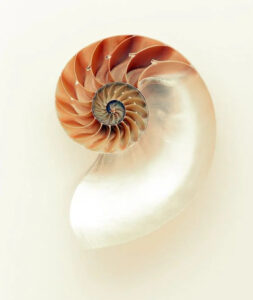
. . . which has been appreciated throughout history, and is still appreciated today. The golden ratio is used as a significant design factor in some watches.
While there is some degree of an absolute quality to beauty, there are also strong influences from the context one is in (mainly society and culture). For example, looking at classical paintings it can be seen that the ideal of beauty in that age was women with a fuller figure (basically, well-off women who had enough to eat). Later in the evolution of art, slimmer women were considered as the ideal, which related to changing perceptions of health and fitness.
For example, one of the aesthetic factors defined by Denis Dutton is “Artistic objects and performances satisfy rules of composition that place them in a recognizable style.” Yet some education in the arts can place value on not being like what anyone else is doing and not fitting into a recognizable style.
Aesthetics through history
In ancient Greece, aesthetics found its roots in the philosophical inquiries of thinkers like Plato and Aristotle. Plato believed in the existence of an ideal realm of forms, including the ultimate form of beauty, which artists aimed to emulate in their creations. Aristotle, on the other hand, emphasized the importance of imitation of nature, suggesting that art should reflect the observable world. These contrasting views set the stage for ongoing debates about the relationship between beauty, reality, and artistic representation.

During the Renaissance in Europe, aesthetics experienced a profound revival. The era celebrated the humanistic approach, valuing individual expression, knowledge, and the revival of classical ideals. Artists like Leonardo da Vinci (above), Michelangelo, and Raphael created works that emphasized proportion, balance, and harmony, drawing inspiration from ancient Greek and Roman art. The period witnessed a fusion of mathematical precision and artistic expression, resulting in masterpieces like Leonardo’s “Mona Lisa” and Michelangelo’s “David.”
In the 18th century, the Age of Enlightenment brought a shift in aesthetic thinking. The emphasis on reason and empirical observation influenced aesthetics, as thinkers like Immanuel Kant explored the nature of beauty as a subjective experience. Kant proposed that aesthetic judgments are based on individual perceptions rather than universal standards. This marked a departure from earlier notions of an objective ideal and paved the way for a more nuanced understanding of aesthetics.

The 19th century witnessed the emergence of Romanticism, challenging the rationalism of the Enlightenment, and focusing on imagination, intuition, and the mysteries of human experience. Romantic artists, such as Caspar David Friedrich (above) and William Turner, sought to evoke emotions and capture the sublime in nature. The emphasis shifted from classical ideals to individual expression, emotion, and a deep connection with the natural world. This period also saw the rise of aesthetic movements like Symbolism and Art Nouveau, which embraced ornate and decorative styles, emphasizing the subjective and mysterious.

The early 20th century marked a radical departure from traditional aesthetics with the advent of Modernism. Artists like Pablo Picasso (above) and Wassily Kandinsky embraced abstraction, challenging representational norms which can be seen as part of a revolution in the whole of the Western Art Tradition. Modernist aesthetics rejected ornamentation, opting for simplicity and a focus on form and function. This era also witnessed the birth of avant-garde movements like Cubism and Surrealism, pushing the boundaries of conventional artistic expression, as well as musical compositions like 4’33” by John Cage which presented the environment as worthy of special focus.
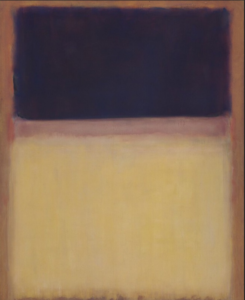
Post-World War II, the mid-20th century saw the rise of Abstract Expressionism, characterized by artists like Jackson Pollock and Mark Rothko (above). This movement emphasized spontaneity, gesture, and emotional intensity, giving prominence to the act of creation itself. Simultaneously, Pop Art (below) emerged, challenging the distinction between high and low culture by incorporating everyday objects and popular imagery.
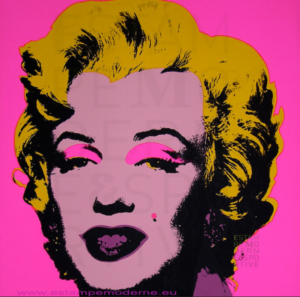
In recent decades, the digital age has brought new dimensions to aesthetics. The advent of computer-generated art, virtual reality, and interactive installations has expanded the boundaries of traditional artistic mediums. Contemporary aesthetics often grapple with the intersection of technology, identity, and globalization, reflecting the complexities of the modern world.
Aesthetic influences today, being different, and subcultures
Different subcultures often have their distinctive aesthetics, such as punk which was consciously designed to be anti what was acceptable around it, hip-hop with its focus on gang culture, and the current “Beige aesthetic” (below) on Tiktok, which is a form of “neutral minimalism” emphasizing neutral colours, natural textures, and simple, clean lines creating a calm and soothing atmosphere. Being unique as a person today, which is a common claim, actually means being a member of a specific subculture which is different from that of most people one meets in everyday life. Indeed, “being different” is now the cultural norm.

I’ll have a look at some subculture influences on watch aesthetics, below.
Even in this day and age where a lot of people like to say how unique they are, in practice, what is valued by the market is often what is just different enough to be labelled “different”, while actually being mostly the same as what’s already accepted. I give a couple of examples of this in my blog post: “being different” while staying mostly the same in the world of graphic design.
While most people can see in their own reactions that some things are unacceptable to their sensibilities, few people understand that this has always been the case, so aesthetics that are acceptable and commonplace now, were extremely controversial at the time they originated. Examples include Bach receiving complaints about his church music which was too strange for listeners at the time, the term “impressionist” now seen as a great art movement with universally agreed beauty such as Monet’s water lilies (below), was originally used as a derogatory term, and that people stood up, booed, and walked out of the first performance of Wagner’s “Tristan and Isolde” because its sequence of unresolved dissonances was too far from what was acceptable at the time.
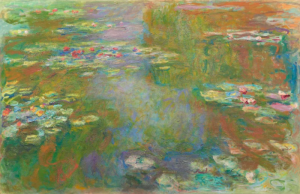
The evolution of aesthetics mostly involves being different enough to be seen as different, yet also fitting into the current context well enough to be acceptable. Ideas that are too far from what is acceptable are not “real” to anyone, so don’t influence a culture. Very occasionally they can be preserved and accepted by a later culture. Uniqueness and individuality are an essential part of the definition of art, but in reality that is usually only partly true, since anything too different is not really seen at all, even in the most creative fields.
A focus on aesthetics only applied to rich people through most of history, when poor people were locked in a continual struggle for survival. Now interest in aesthetics (although mostly dependent on the opinions and choices of a few significant individuals) pervades most of society, with recent generations having a strong interest in uniqueness and innovation, as well as a fascination with aesthetics influenced by the past.
It’s interesting to note how the countryside only started to be seen as “beautiful” and having value in its own right after most people had moved to the cities and then wanted to spend time away from their urban existence, seeing and appreciating rural environments from a distanced perspective. This relates to the neo-Luddite appreciation for hand-made watches, now appreciated for their nostalgia, tradition and as something better than “mass-produced”, which is very different from the original Luddite movement which was in reaction to machines taking the jobs that people needed to buy food. Now, the interest in handmade watches is partly about interest in artisanal work and the skills of traditional crafts, and partly about the hand-made as a rarity in the context of mass personalization.
Aesthetic Influences On Watchmaking
The act of wearing a watch in present times, is, itself, a significant link to tradition, since we live in an age when everyone has the time on their smartphone. Many of the big-name watch brands, as well as smaller established watchmakers, have their own heritage and history. Watches that, whether knowingly or unknowingly, link to the past, as almost all of them do, are relating to the context of the development and evolution of horology.
Indeed, even if, theoretically, a watch were to be made which itself had no links to the past, it can only be seen by people who are inevitably part of a culture which is mostly based in the context of the past, so a watch cannot be seen without one’s inevitable cultural context.
The majority of the aesthetic influences on most watches are from the history of watchmaking, and those are engineering, and fine jewellery with its use of simple geometric shapes, smooth polished surfaces and precious materials.
The evolution of aesthetics applies to watches, with watches which were once outstandingly innovative and unusual now being seen as commonplace. An example is the Cartier Santos, once a unique new invention for an unusual wearer, now being the basis of most watch design. For the pioneering Brazilian aviator Alberto Santos-Dumont, they designed a watch to be worn on the left wrist, with what are now called lugs to hold the strap to the case and a clasp to hold it firmly (unlike a slip-on women’s bracelet), a winding mechanism on the right, and a minute hand. They named the model the “Santos”:
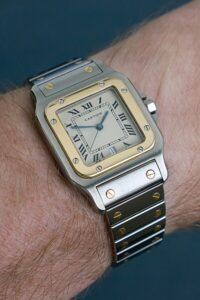
. . . and it has been the basis of the majority of wristwatch designs since that time.
The two main types of watch aesthetics today are traditional (retro or conventional), or unusual/creative/unique.
One prominent influence on many aesthetic watches is the enduring legacy of craftsmanship and artisanal expertise, particularly evident in luxury watchmaking. High-quality materials, intricate detailing, and meticulous finishing contribute to the timeless elegance associated with brands like Rolex and Patek Philippe.
The evolution of watch dials and cases has also been shaped by architectural and design movements. Art Deco, with its geometric shapes and luxurious materials, has left an indelible mark on watch aesthetics, as seen in the sleek lines of classic timepieces. Similarly, the minimalist ethos of Bauhaus has inspired the clean, functional designs of many watches, emphasizing simplicity and legibility, as well as being part of the origins of art jewellery which moves beyond the insistence on highly polished surfaces.
DB28 XP Météorite by De Bethune:
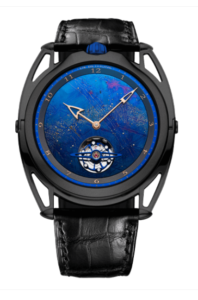
The influence of the natural world is often evident in watch design, with motifs like floral patterns, celestial elements (seen above in the Météorite by De Bethune), and marine themes frequently incorporated. Contemporary aesthetic watches often blend traditional craftsmanship with modern materials, embracing innovative design approaches and technological advancements.
Wearing a luxury watch can be a symbol of success in some areas of society, which can affect your own aesthetic . . . how you feel about yourself and how other people see you. For most of their history, watches were only available to the wealthy. It was only after the first world war that ownership of wristwatches became common throughout society.
The watch you choose shows others your values, character and aesthetic choices.
Timepiece engineering as aesthetics
The watch today has evolved in relation to societies and cultures, moving beyond the necessities of functionality. Parts of a watch which were once only about functionality can now be used as aesthetic components, as well as impressive feats of engineering created just to impress.
Looking at the movement of a watch was once considered ungentlemanly . . . a gentleman would be interested in the case and dial, with the movement being the province of tradesmen. These days, the movements are often displayed as aesthetically interesting in their own right, by watches with a more innovative style. De Bethune produce fine examples of parts of a watch movement used as a thing of beauty, such as this example on the back of the DB28:
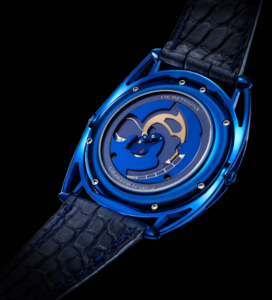
Most of the creative and unusual watches today use engineering as aesthetics. Examples include:
A closeup of a Stuhrling Tourbillon Movement:
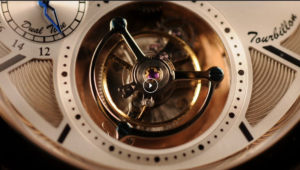
the HM9 Sapphire Vision from MB&F:
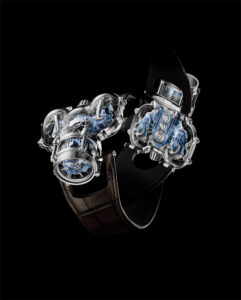
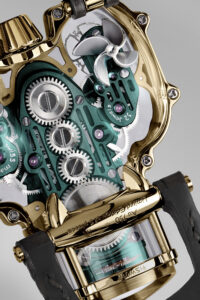
. . . which is visually extraordinary as well as being technically impressive, and was made available to the public in four limited editions, with just five pieces each. They decided to present their amazing and beautiful movement encased in “an outer hull of sapphire crystal and precious metal.”
The A. Lange & Söhne tourbograph perpetual, “pour le mérite”:
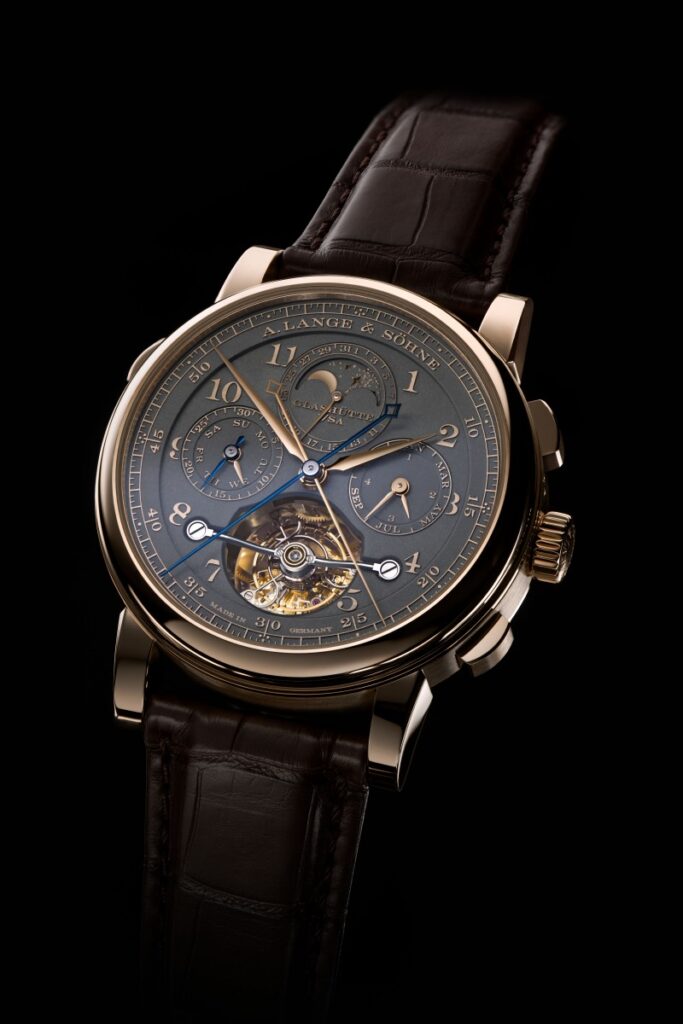
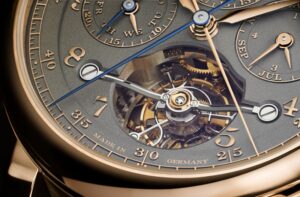
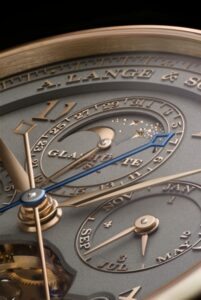
. . . which combines five outstanding complications: fusée-and-chain transmission, tourbillon, rattrapante chronograph, and perpetual calendar. It is available on “honey-gold”, silver or platinum, and limited to 50 pieces, commemorating their 175th anniversary.
A watch by Andreas Strehler:
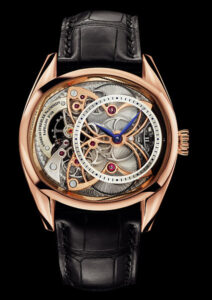
Watches with an art jewellery influence
A few recent aesthetic watches have a degree of influence from art jewellery, with its acceptance of complex forms and surfaces as well as a wider range of materials, such as these examples.:
The Cartier Crash Tigrée watch has strong art-jewellery (and surrealist) influences as well as some fine jewellery influence while retaining conventional watch hands.
The Molnár Fábry Architectural Art Piece:
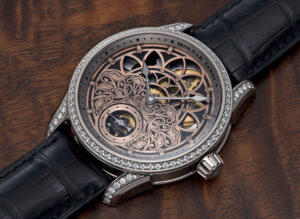
. . . this unique and beautiful watch has an engraved dial inspired by Art Nouveau.
Wood watches can be seen as belonging to some degree in the art jewellery space, since they use materials with organic textures, and which are not as valuable as precious metals. See my blog post for details of wood watches.
For more detail on how art jewellery relates to watchmaking, and the fascinating background to that subject, see my blog post on art jewellery and watchmaking.
While reactions to the past have always been a fundamental part of the evolution of aesthetics, it is now more obvious such as with “anti-aesthetics.” For example Ochs Und Junior create watches with surfaces that celebrate the marks made by the machining process, and Holthinrichs watches are proud of their 3D printed textures (below). Other writers (such as in the Hodinkee article here) have mentioned that this relates to the brutalist art movement. It also relates to the evolution from fine jewellery with its simple geometric shapes and polished surfaces, to art jewellery, which often uses complex, organic, fractal forms and rough surfaces, as well as being about authenticity and things being what they are, instead of being decorated and disguised.
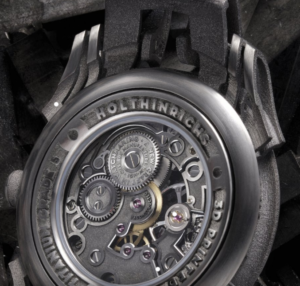
Influences from significant events or people
Some aesthetic watches are influenced by significant events and iconic figures, becoming more than mere timekeeping devices. A prime example is the Rolex GMT-Master, created in collaboration with Pan American Airways in the 1950s. Born from the era of transatlantic flights, it was designed to meet the needs of pilots, particularly those navigating multiple time zones. Its iconic red and blue “Pepsi” bezel pays homage to the airline’s colours.
The Omega Speedmaster (below) achieved legendary status when it became the first watch on the moon during the Apollo 11 mission in 1969. Its association with space exploration has immortalized it as the “Moonwatch,” a symbol of human achievement and precision.
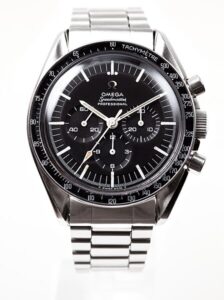
The Cartier Tank (below), worn by Louis Cartier himself, became an enduring symbol of elegance in the 20th century. Paul Newman’s Rolex Daytona garnered iconic status, not just for its performance but also for its association with the legendary actor and race car enthusiast.
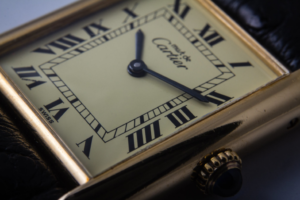
Watch collaborations
Watchmakers sometimes collaborate with artists or other industries including automobiles, affecting the aesthetics of parts of the timepiece to varying degrees.
Iconic collaborations between watchmakers and automobile manufacturers have given rise to exceptional timepieces, exemplifying the shared values of both industries.
Historical significance greatly contributes to a watch’s uncommon status. Timepieces associated with significant celebrities or events, owned by notable figures, or embodying ground-breaking technological advancements become prized possessions. Vintage watches, especially those with a unique provenance or an association with a renowned maker, hold an inimitable allure.
The Tag Heuer Monaco, famously associated with the “King of Cool” Steve McQueen, embodies the racing spirit with its square case and bold design. Released in 1969, it became the first automatic chronograph to feature a square waterproof case:
. . . the TAG Heuer Monaco Steve McQueen:
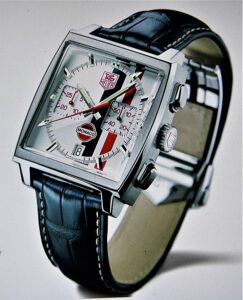
The partnership between Rolex and Formula 1 racing has produced legendary watches, such as the Rolex Daytona (detail below). Designed to meet the demands of professional drivers, it boasts a tachymetric scale and chronograph functions, emphasizing the fusion of precision timing with the adrenaline-fueled world of racing.
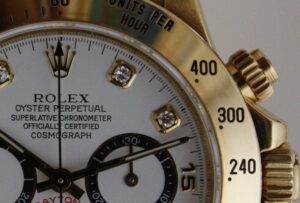
Breitling’s collaboration with Bentley resulted in timepieces featuring design elements reminiscent of the luxury car interiors. Jacob & Co. created the Bugatti Chiron Tourbillon:
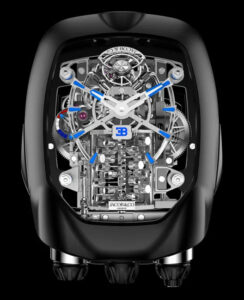
. . . which is a watch with a tiny 16-cylinder engine inside, with moving parts . . . which is one of the more significant aesthetic influences of cars on watches, some others of which are merely a standard watch with a small car logo added somewhere on the dial.
There have also been numerous collaborations between watchmakers and artists. While the influence by the artist is usually obvious when looking at the aesthetic watch, such as a dial with art on it, in reality, these might be more accurately described as a watch plus some art, since the art rarely has much, if any, influence on the rest of the watch.
Subculture influences on watchmaking
The skateboarding subculture has also influenced watches, with brands like Nixon producing timepieces with skateboarding graphics on the dial.
Hip-hop aesthetics influence watches with a fusion of bold, expressive styles and opulent details. From oversized faces adorned with intricate gold or diamond embellishments to flashy, oversized logos, these timepieces mirror the flamboyance and individuality synonymous with hip-hop culture. The hip-hop influence extends to customizations, with rappers often adding personal touches, creating bespoke pieces that resonate with their unique personas. My own design of a Hip-hop watch focuses on the bold, brash concepts from hip hop imagery, gold and diamonds, and has the word “HIP HOP” in the center:

There are watches influenced by the goth subculture, with skulls, ornate decorations and black gemstones. There are also watches with a steampunk influence, including a beautiful example by Devon watches.
Differing Degrees Of Aesthetics Focus In Watch Design
As we’ve seen above, some watches have a degree of influence from their chosen aesthetic influences, such as from a collaboration with an artist, or from significant events, people or other industries such as automobiles.
For example the Franck Muller Double Mystery Tourbillon Hom Nguyen:
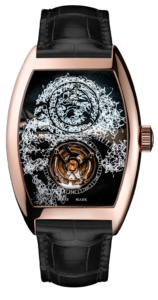
. . . features the work of Hom Nguyen, a self-taught French-Vietnamese painter whose works are about the human condition. He chose to show a child’s face looking up, drawn in pen directly onto the mat black dial, resulting in a unique aesthetic for this extraordinary watch.
Only a few of these influences extend significantly beyond the watch dial, with the rest of the watch typically being relatively conventional and unrelated to the other influences.
Indeed, the degree of chosen influence on some of the more unusual creative watches which are an exploration of the possibilities of radical engineering, influence more parts of the watch than the examples above where the influence is almost entirely on the dial or one other specific part of the watch.
How Aesthetics Focused Are UnconstrainedTime Watches?
UnconstrainedTime watches.
If you love our watches, make sure you don’t miss the launch . . . subscribe for email notifications.
What we are doing is definitely not like a collaboration which produces a conventional watch with some art on the dial. With an UnconstrainedTime watch, the art is the watch and the watch is the art . . . each UnconstrainedTime piece is conceived and developed as a unified artistic vision. From our world-first 3D fractal concept to interpretations of musical genres, every watch represents a unique creative journey. These aren’t simply timepieces with artistic elements – they are wearable sculptures that tell time. Each one including its creator’s signature and produced in small, considered quantities
And I really do mean that our watches are art, rather than creative design. There’s a difference between art and creativity, however much marketing tries to ignore the real definitions.
Art is
- creativity relating to conceptual ideas used as a means to communicate, evoke emotions and present challenge perspectives and concepts,
- it is enjoyed for its own sake, not for it’s practical usefulness as one would with design,
- art has special focus . . . it presents something as being worthy of unusual attention, unlike most of the experience of everyday life.,
- art is a personal exploration beyond one’s current reality,
- it is unique (a copy of art is not art, although a limited editions can be),
- it is focused on aesthetics,
- and is personal . . . it is, to a significant degree, about the person who created it.
UnconstrainedTime watches use our unique, simple, small-footprint time-display which allows much more creative freedom without the strong archetypes inherent in most time-displays, and a significantly stronger focus on freely chosen aesthetics than most watches.
Our watches have little or no influence from fine jewellery or from engineering, giving us more conceptual freedom to explore powerful, unique and fascinating aesthetic influences.
Our brand already has a wide range of different aesthetics influences, yet is also a strongly defined brand. We welcome collaborations with other creators, yet the brand is clearly defined, partly by being unusually unique and individualistic with an exceptionally strong focus on chosen aesthetics.
One of the main reasons for our brand being so unique, is that, although I find myself making watches, I am not exactly a watchmaker: I have no training in traditional watchmaking, and don’t have the influences which inevitably come with such an education.
What I mean by “chosen aesthetics” is influences which are not part of the context of conventional watch design. For example, our poppy seed pod watch in blackened silver:

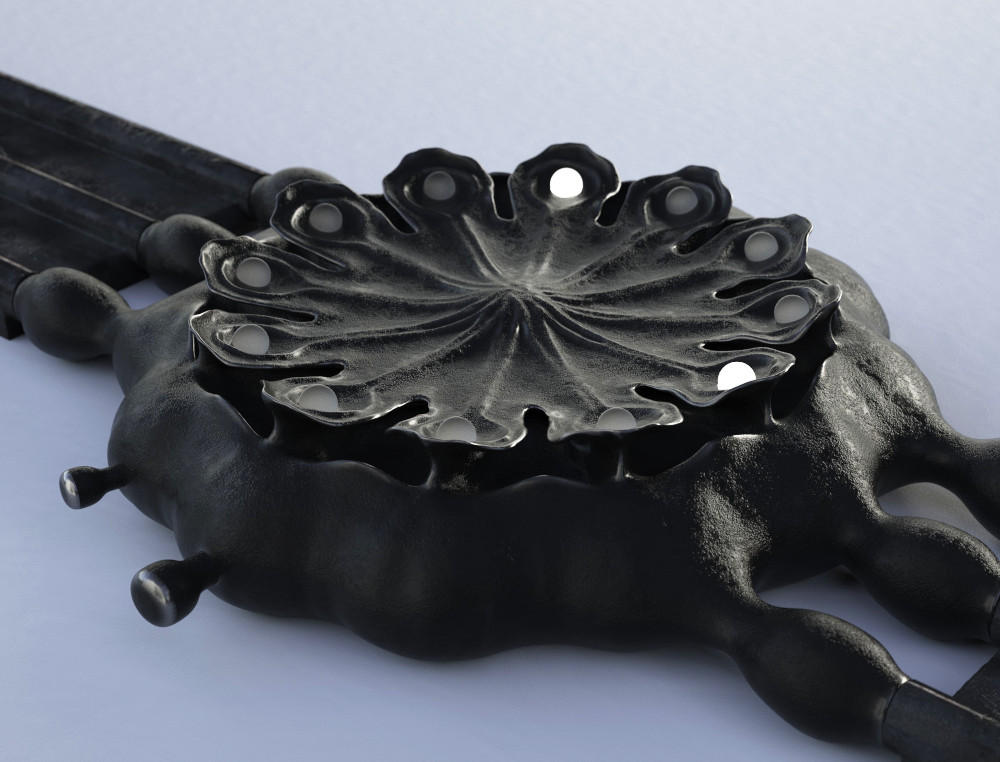
. . . has poppy seed pods as its main aesthetic influence. There is little or no influence from fine jewellery since the forms and surfaces are not part of the fine jewellery vocabulary and instead align with art jewellery, and little influence or no from the engineering which is the basis of conventional watch design. Our radically simple time-display doesn’t have the very powerful archetypal influences of hands or numerals, and thus facilitates the use of chosen aesthetics.
Another example is our Techno circle #1 watch:

. . . where the aesthetic influences are those beautiful techno circle graphic images such as these below:

There are other watches with minimal time-displays, but few of them use that creative freedom to explore a choice of aesthetics much beyond the engineering or fine jewellery inherent in conventional watches.
In my opinion, UnconstrainedTime watches have a stronger focus on freely chosen aesthetics than any other watch brand I am aware of, and we are arguably the first conceptual art jewellery based watch brand. But then I’m biased 🙂 What do you think, and why?
If you like our watches, don’t miss the launch . . . subscribe for email notifications.
What do you find most interesting about aesthetic watches? Let us know in the comments below, or on our social media.
Author: Chris Melchior

This article was authored by Chris Melchior, founder of UnconstrainedTime and creator of the original range of wrist-worn sculptures of this unique artistic adventure.
Chris has extensive knowledge and experience of creativity, including fine art and cutting-edge contemporary music composition, and was awarded a First Class Honours Degree in fine art and music with a minor in philosophy.
Chris’s life-long artistic obsessions include organic forms and textures, abstraction, fractals, and the aesthetic essence of musical genres.
He has developed unusually deep insights into the elemental concepts underlying areas including Eastern and Western philosophies, science and technology, creativity and the arts, as well as empirical spirituality in which he is acknowledged as a leading authority.
He has a profound fascination and love for the unique and synergistically creative combination of fine art with the ancient essence of time-keeping which evolved into the UnconstrainedTime project.

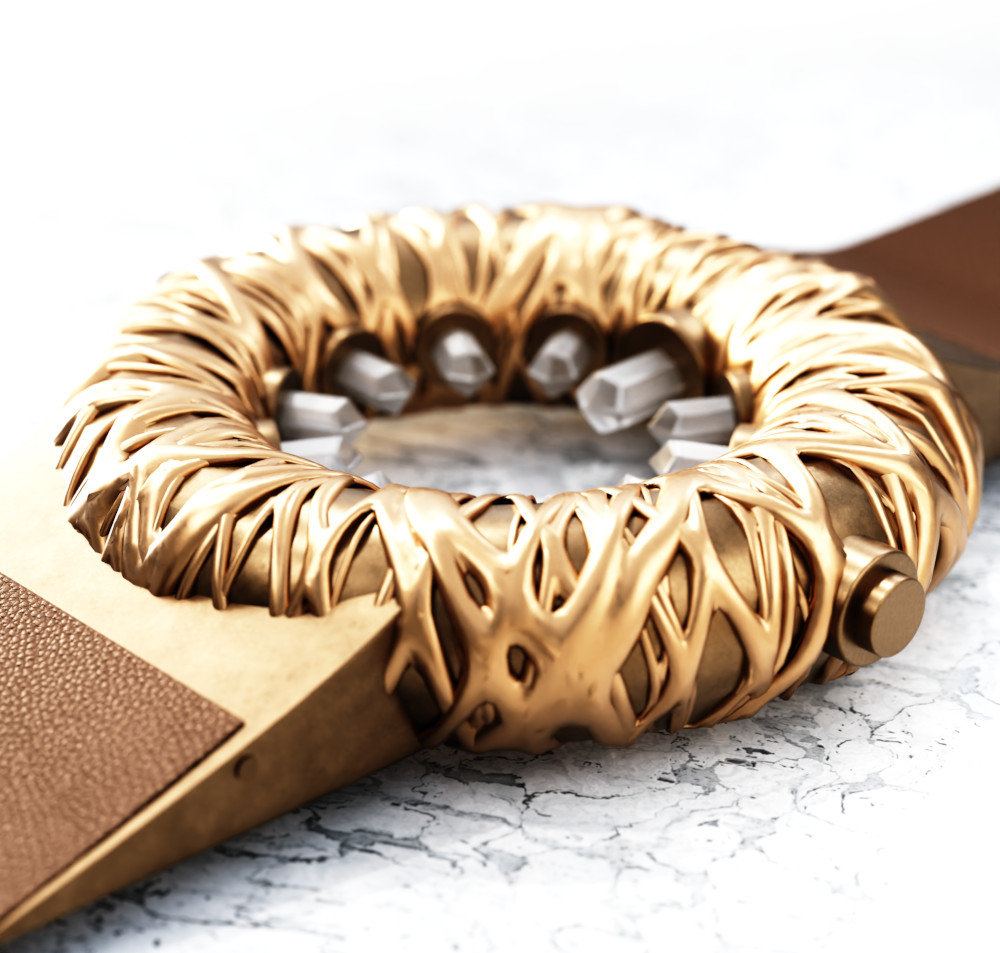
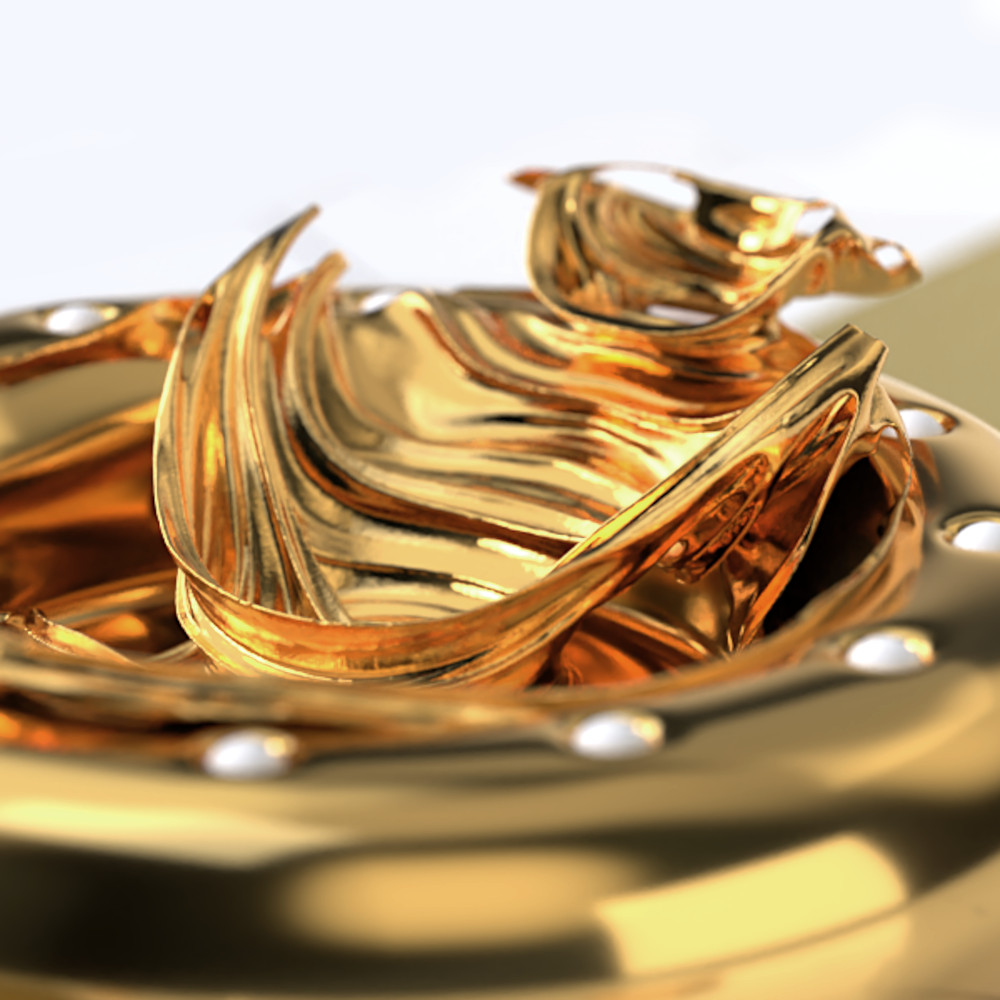
Leave a Reply